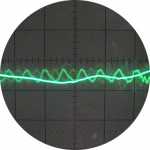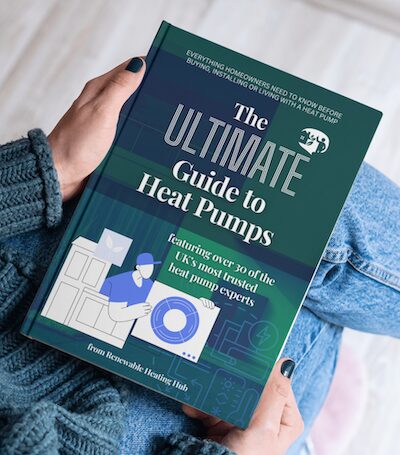What is this and what does it do?
Posted by: @heat-pump-newbieI have a new What's it all about? question for you.
I believe the difference in temperature (is it the hysteresis ?) between the Leaving water and the Inlet water is set in the system - mine seems to be about 7 deg when it's running the heating, and 4 deg when it's running the DHW.
So my question is: how does this work ? Is it done by the flow rate of the water being pumped round the system ? I can't see the flow rate on my controller (at least I don't know how to).
Hi Newbie,
The Delta T (difference in temperature) is created because your heating system is obeying the First Law of Thermodynamics, which relates to the Conservation of Energy. Since energy cannot be created or destroyed, it can only be changed in form.
When your heating system is shutdown it will eventually reach a state of balance or equilibrium, although a Delta T will probably still exist between the indoor and outdoor air temperatures. When the heat pump is started, the compressor will begin to increase the pressure and temperature of the refrigerant gas as it is pumped into the condenser, which creates the first Delta T, the difference in temperature between the gas and the metal of the condenser. As the metal absorbs energy and heats, this creates the second Delta T, the difference in temperature between the metal of the heat exchanger and the central heating water. Due to the Delta T's, heat energy will flow from the refrigerant gas to the water, and in so doing the gas will start to cool and eventually will start to condense. As the refrigerant changes state from gas to liquid it releases a large amount of energy, which is absorbed by the water and hence increases its temperature. This process would continue until a point of equilibrium is reached and the compressor would shutdown.
To heat your home, this heat energy needs to be transferred from the heat pump into your home, which is the task that the water performs. Having now got the heat energy inside your home it is then necessary to extract it in a useful manner. This is the task of the heat emitters, which are in basic terms heat exchangers. More Delta T's now come into play, as the warm water now heats the heat emitters, which in turn heat their surroundings and in so doing warm your home. The transfer of heat energy from the water has a cooling effect, so this creates a Delta T between the inlet and outlet water temperature. This cooler water then flows back to the heat pump to be reheated.
So you may think in simplistic terms, that it is the heat emitters that define the Delta T between the inlet and outlet temperatures at the heat pump. Obviously the size and type of the heat emitters along with the actual water flow temperature have a large influence upon the actual return water temperature, but another important factor is the water flow rate.
To heat 1 litre of water from 20C to 50C requires approximately 35 Watts of energy, which may not sound a great deal, but to heat 10 litres of water per minute from 20C to 50C continuously, would require 21 kWh of heat energy. If the temperature of the inlet water to the heat pump is at 30C and the outlet water is at 35C, then with a flow rate of 10 L/min, the transfer of heat energy will be approximately 3.5 kWh. If the flowrate is doubled to 20 L/min then the transfer of energy would be 7 kWh. Conversely, if the Delta T was reduced from 5C to 4C at a flowrate of 10 L/min, then the transfer of energy would be 2.8 kWh.
Looking at the heat emitter end of the equation, if the actual heat demand is say 6 kWh at a Delta T (they get everywhere) of 21C between the indoor air temperature and the outdoor air temperature, then it would be possible to calculate the required flowrate to transfer 6 kWh of heat energy from the heat pump into your home. This would be approximately:-
6000 Watts / 350 Watts per Litre = 17.14 L/min. @ a Delta T of 5C.
Obviously the heat pump controller cannot measure the heat demand directly, but by measuring the outdoor air temperature it can try to predict the required water flow temperature. It can also measure the Delta T between the inlet and outlet water temperature, if the Delta T is reducing then it is providing too much heat energy, so would need to reduce the water flowrate and vice versa.
A Delta T is required at the heat pump to ensure that the refrigerant gas is being condensed and releasing its heat energy, but having too large a Delta T would mean that the heat transfer process from heat pump to home is not at its optimum. It would appear that many of the heat pump manufacturers have specified a Delta T in the region of 4C to 8C.
Optimising the Delta T setting is therefore a 'team' effort that involves the major component parts of your heating system.
Wow @derek-m Thanks for all that !! So the system does alter the water flowrate to achieve the specified delta T ?
Posted by: @heat-pump-newbieWow @derek-m Thanks for all that !! So the system does alter the water flowrate to achieve the specified delta T ?
It does if your heat pump has a variable speed pump and it is enabled, otherwise to some extent the system is self regulating.
If the water flow temperature is higher than required to meet the heat demand, then the water return temperature would start to increase, which would in turn push up the water flow temperature, causing the controller to reduce the compressor output pressure and temperature.
The system should therefore self regulate within limits.
- 26 Forums
- 2,360 Topics
- 53.5 K Posts
- 138 Online
- 6,026 Members
Join Us!
Worth Watching
Latest Posts
-
RE: Mitsubishi Ecodan R290 10kW performance
@sheriff-fatman This is the table that I am familiar wi...
By Ecoste , 4 hours ago
-

RE: My Powerwall 3 Consumes 3-4 kWh/Day in Self-Consumption: Is This Normal?
@caron, I'm looking into this for you... from my own pe...
By Mars , 6 hours ago
-
RE: New Fogstar 15.5kWh upright solution
SITREP #5 (I think) Milestone completed toda...
By GGW , 8 hours ago
-
RE: Octopus Cosy Heat Pump Owners & Discussion Thread
The FT levels off at either the set point OR the minimu...
By AndrewJ , 8 hours ago
-
RE: MyVaillant Connect Regular Disconnect
Thanks. Yes, if the time is consistently 11pm every nig...
By buckwem , 8 hours ago
-

RE: Speedcomfort radiator fans
My take on Speedcomfort radiator fans: If anyone w...
By Mars , 14 hours ago
-
RE: Midea ASHP – how to set weather compensation
@pash44pump I have yet to come across any Clivet or Mid...
By benson , 14 hours ago
-
RE: Who's your electricity provider and what's your tariff?
@transparent Thanks, this helps. Could it be that St...
By Batpred , 15 hours ago
-
RE: Clivet ASHPs and weather compensation
Simon did share a lot of very helpful advice. On furthe...
By ambris , 15 hours ago
-
RE: Home Assistant vs ESPAltherma.
@majordennisbloodnok Thanks very much.
By Ubert767 , 16 hours ago
-

RE: Setback savings - fact or fiction?
I could, but I think we can do better, by plotting hour...
By cathodeRay , 1 day ago
-
RE: Advice on internal circulation pump noise
Extend the primary branch and make sure you have more t...
By ASHP-BOBBA , 1 day ago
-

RE: External pipework insulation
Oh Dear! that's appalling pipe work, should've been in ...
By dgclimatecontrol , 2 days ago
-

RE: Jokes and fun posts about heat pumps and renewables
By Morgan , 2 days ago
-

RE: Controlling Daikin Altherma via P1P2 and Home Assistant
On the contrary, @toodles, that’s a lot of help. I’d ne...
By Majordennisbloodnok , 2 days ago
-

Parsnip, Bacon & Coconut Milk Soup
First let me say, I am only a cook because I am human a...
By Toodles , 2 days ago
-
RE: Electricity price predictions
Ben Watts posted on LinkedIn that he had updated this w...
By Judith , 3 days ago
-

RE: The good, the bad and the not that great – my heat pump installation
Small update, Emailed and Spoke to Midea UK and they ...
By Burtis , 3 days ago



